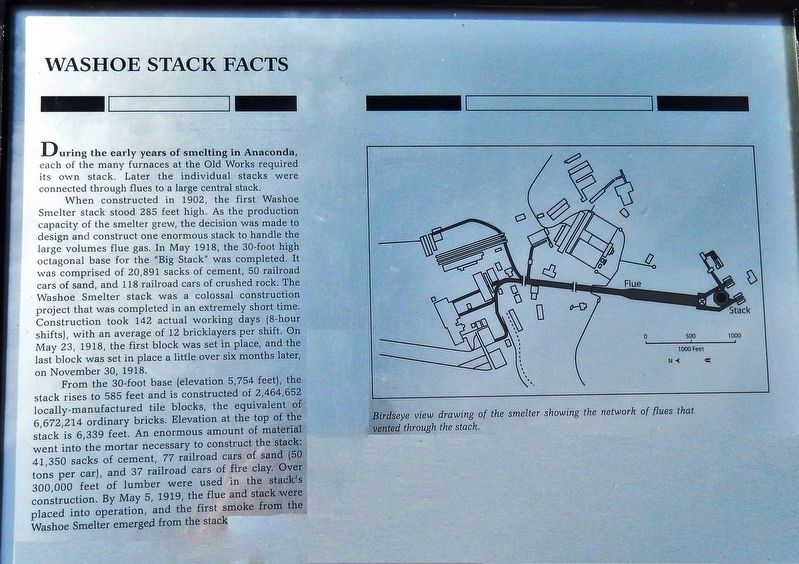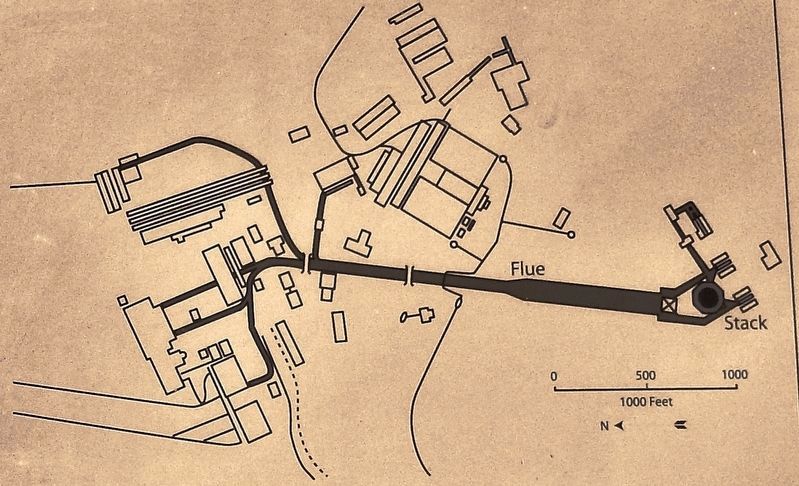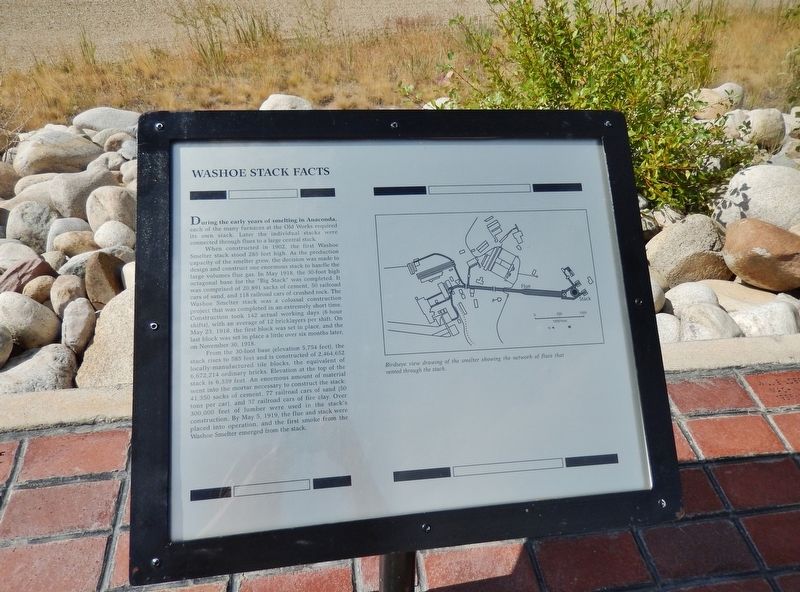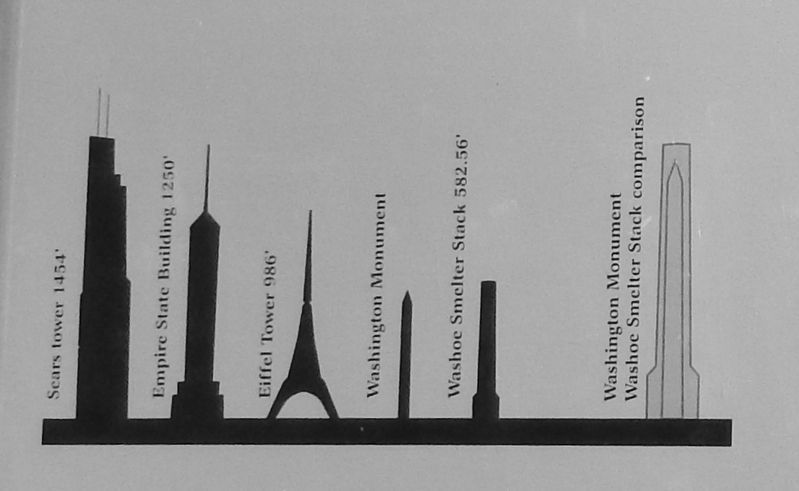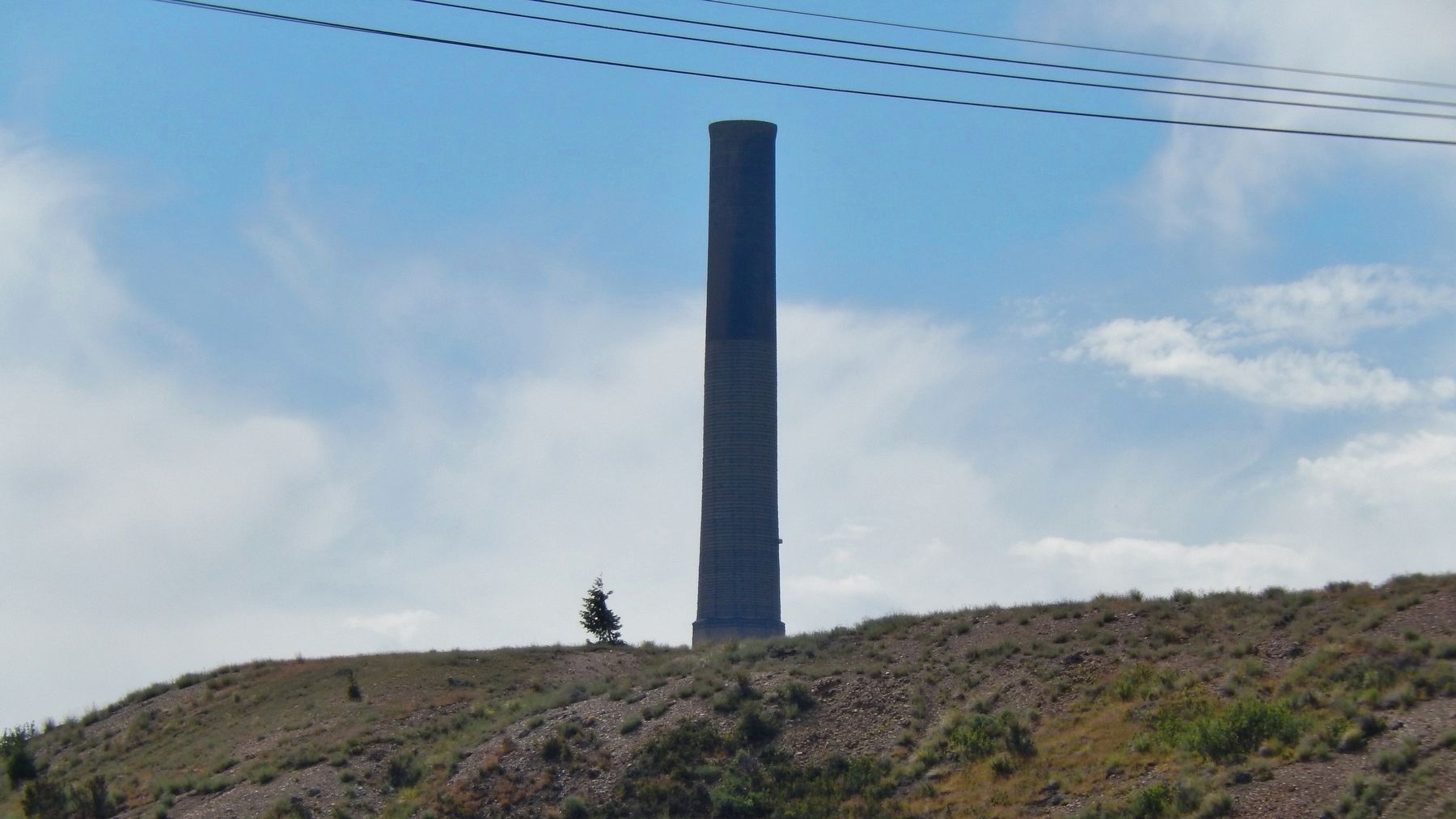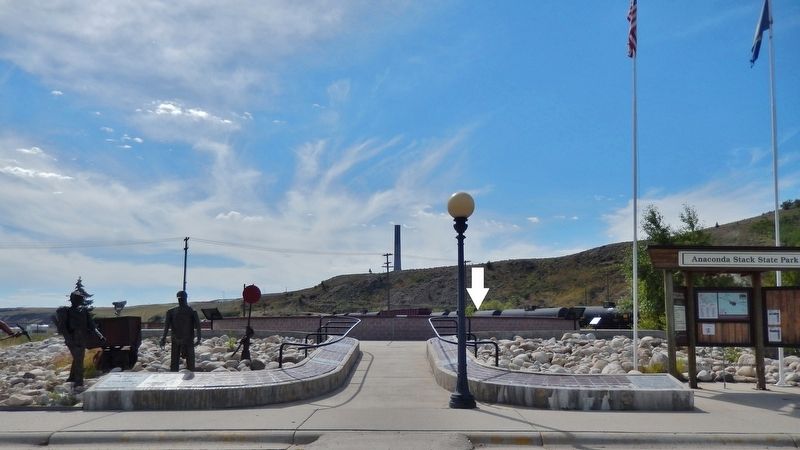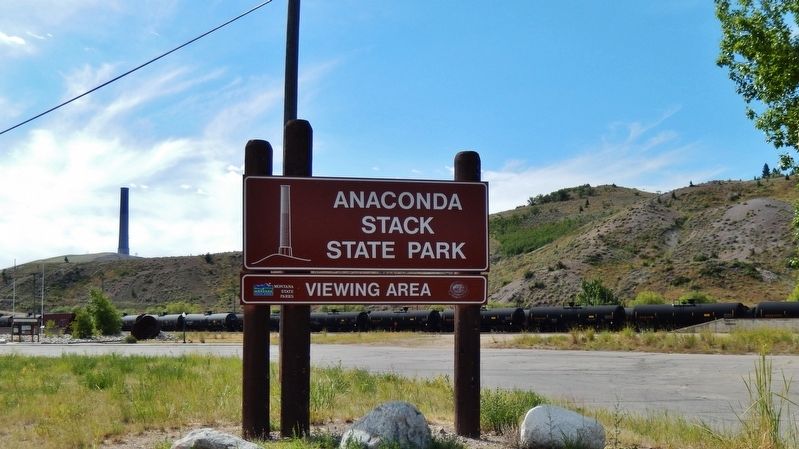Anaconda in Deer Lodge County, Montana — The American West (Mountains)
Washoe Stack Facts
During the early years of smelting in Anaconda, each of the many furnaces at the Old Works required its own stack. Later the individual stacks were connected through flues to a large central stack.
When constructed in 1902, the first Washoe Smelter stack stood 285 feet high. As the production capacity of the smelter grew, the decision was made to design and construct one enormous stack to handle the large volumes of flue gas. In May 1918, the 30-foot high octagonal base for the "Big Stack" was completed. It was comprised of 20,891 sacks of cement, 50 railroad cars of sand, and 118 railroad cars of crushed rock. The Washoe Smelter stack was a colossal construction project that was completed in an extremely short time. Construction took 142 actual working days (8-hour shifts), with an average of 12 bricklayers per shift. On May 23, 1918, the first block was set in place, and the last block was set in place a little over six months later, on November 30, 1918.
From the 30-foot base (elevation 5,754 feet), the stack rises to 585 feet and is constructed of 2,464,652 locally-manufactured tile blocks, the equivalent of 6,672,214 ordinary bricks. Elevation at the top of the stack is 6,339 feet. An enormous amount of material went into the mortar necessary to construct the stack: 41,350 sacks of cement, 77 railroad cars of sand (50 tons per car), and 37 railroad cars of fire clay. Over 300,000 feet of lumber were used in the stack's construction. By May 5, 1919, the flue and stack were placed into operation, and the first smoke from the Washoe Smelter emerged from the stack.
Erected by Montana Historical Society and Montana Department of Fish, Wildlife & Parks.
Topics. This historical marker is listed in these topic lists: Industry & Commerce • Landmarks. A significant historical date for this entry is May 5, 1919.
Location. 46° 7.376′ N, 112° 55.874′ W. Marker is in Anaconda, Montana, in Deer Lodge County. Marker is on Anaconda Smelter Road (East 4th Street), ¼ mile south of Park Avenue (Pintler Veterans Memorial Scenic Hwy) (State Highway 1), on the right when traveling east. Marker is located in Anaconda Smelter Stack State Park, along the circular walkway around the smelter stack exhibit, just east of the parking lot. Touch for map. Marker is at or near this postal address: 100 Anaconda Smelter Road, Anaconda MT 59711, United States of America. Touch for directions.
Other nearby markers. At least 8 other markers are within walking distance of this marker. Organized Labor (a few steps from this marker); Marcus Daly - An Irishman with Vision (a few steps from this marker); Preserving the Washoe Smelter Stack (a few steps from this marker); Smelting the Ore (a few steps from this marker);
Contributions of the Washoe Smelter (within shouting distance of this marker); Goosetown Historic District (within shouting distance of this marker); Washoe Brewery (approx. 0.4 miles away); 801 East Third Street (approx. 0.6 miles away). Touch for a list and map of all markers in Anaconda.
More about this marker. Marker is a large, framed, laser-printed metal plaque, mounted horizontally on a waist-high metal post.
Related markers. Click here for a list of markers that are related to this marker. Butte-Anaconda National Historic Landmark District
Also see . . . Anaconda Smelter Stack Construction. At the time it was built, it was the tallest masonry, brickwork structure and chimney of any kind in the world and it remains the world's tallest surviving masonry structure. Taller masonry chimneys have existed but have since been demolished. Taller chimneys that still exist are made of reinforced concrete. The Washington Monument would fit inside the stack's brick portion except for the lowest 100 feet where an overlap of as much as one foot at each corner of the monument would occur. The stack's brick portion is about 6 inches taller than the monument's height. The masonry portion of the stack is about 15 inches taller than the above ground portion of the monument's masonry, which disregards the monument's aluminum apex. (Submitted on January 2, 2019, by Cosmos Mariner of Cape Canaveral, Florida.)
Credits. This page was last revised on December 20, 2020. It was originally submitted on January 2, 2019, by Cosmos Mariner of Cape Canaveral, Florida. This page has been viewed 413 times since then and 51 times this year. Photos: 1, 2, 3, 4. submitted on January 2, 2019, by Cosmos Mariner of Cape Canaveral, Florida. 5. submitted on January 3, 2019, by Cosmos Mariner of Cape Canaveral, Florida. 6, 7. submitted on January 2, 2019, by Cosmos Mariner of Cape Canaveral, Florida. • Andrew Ruppenstein was the editor who published this page.
